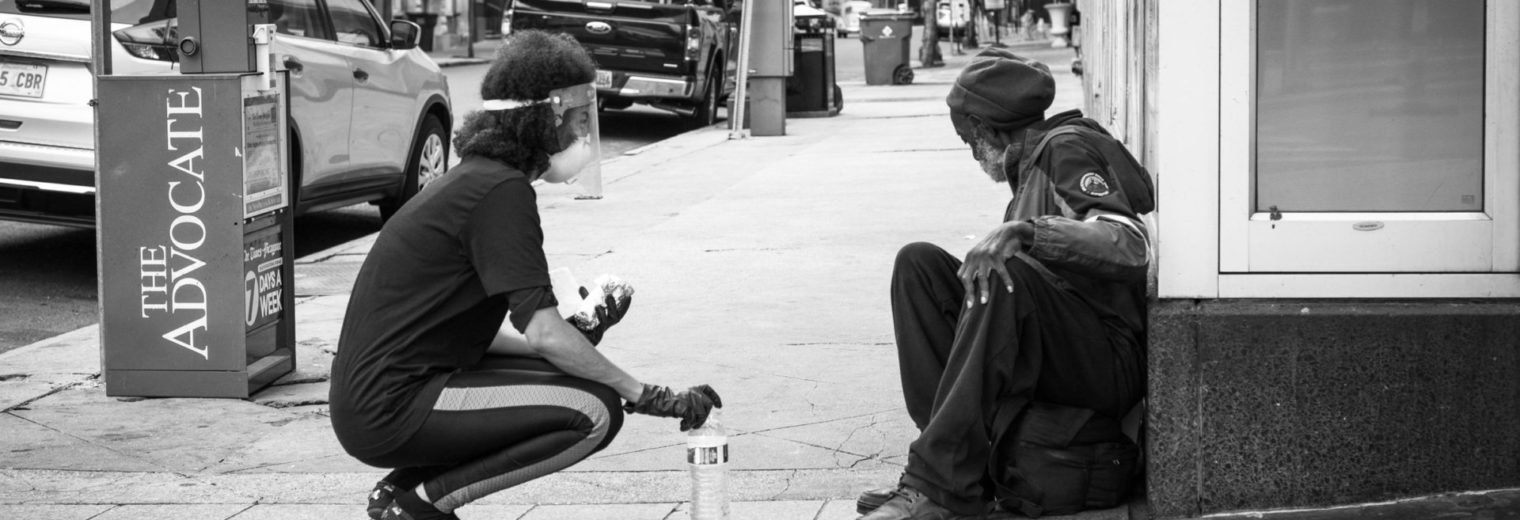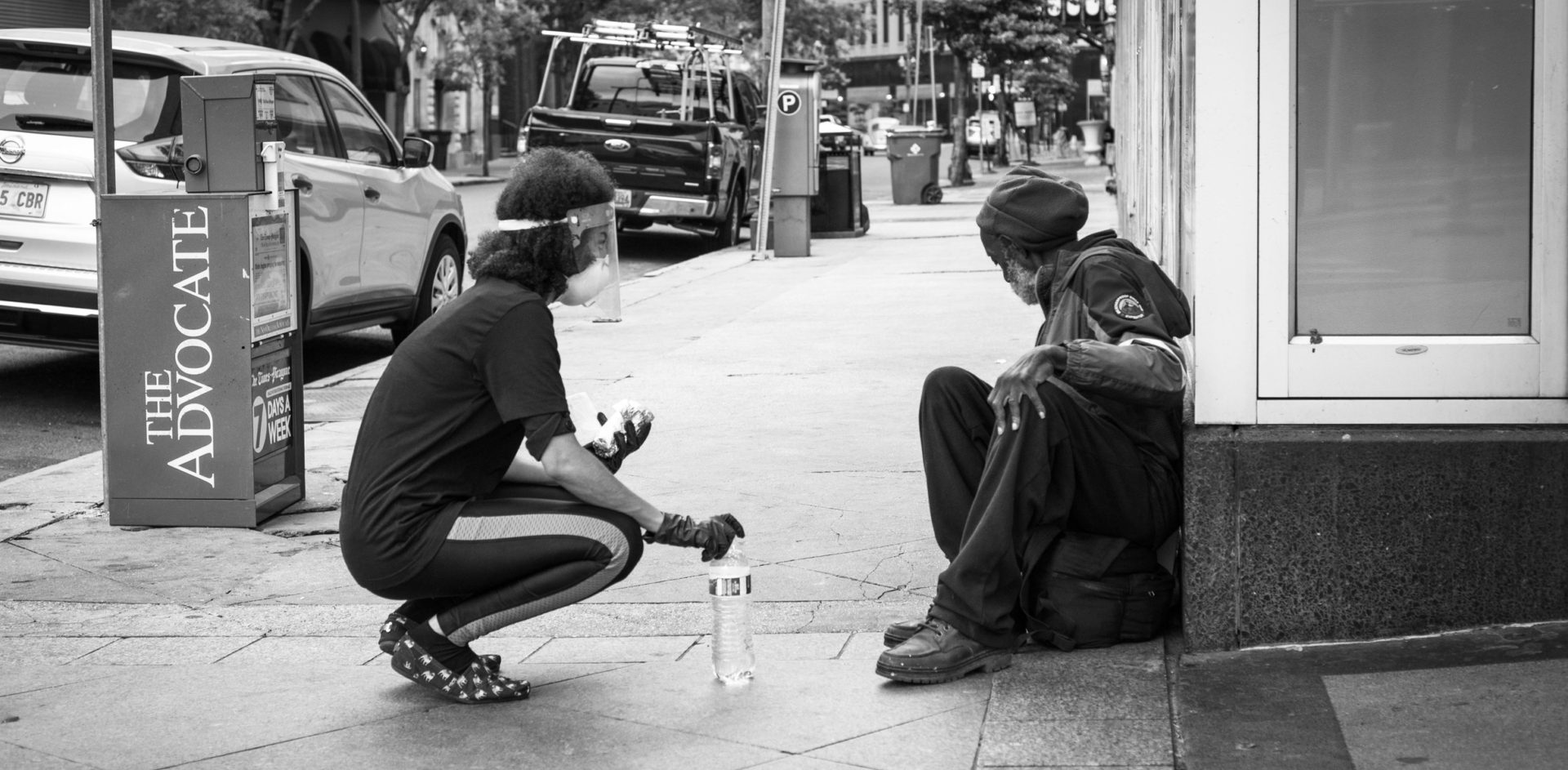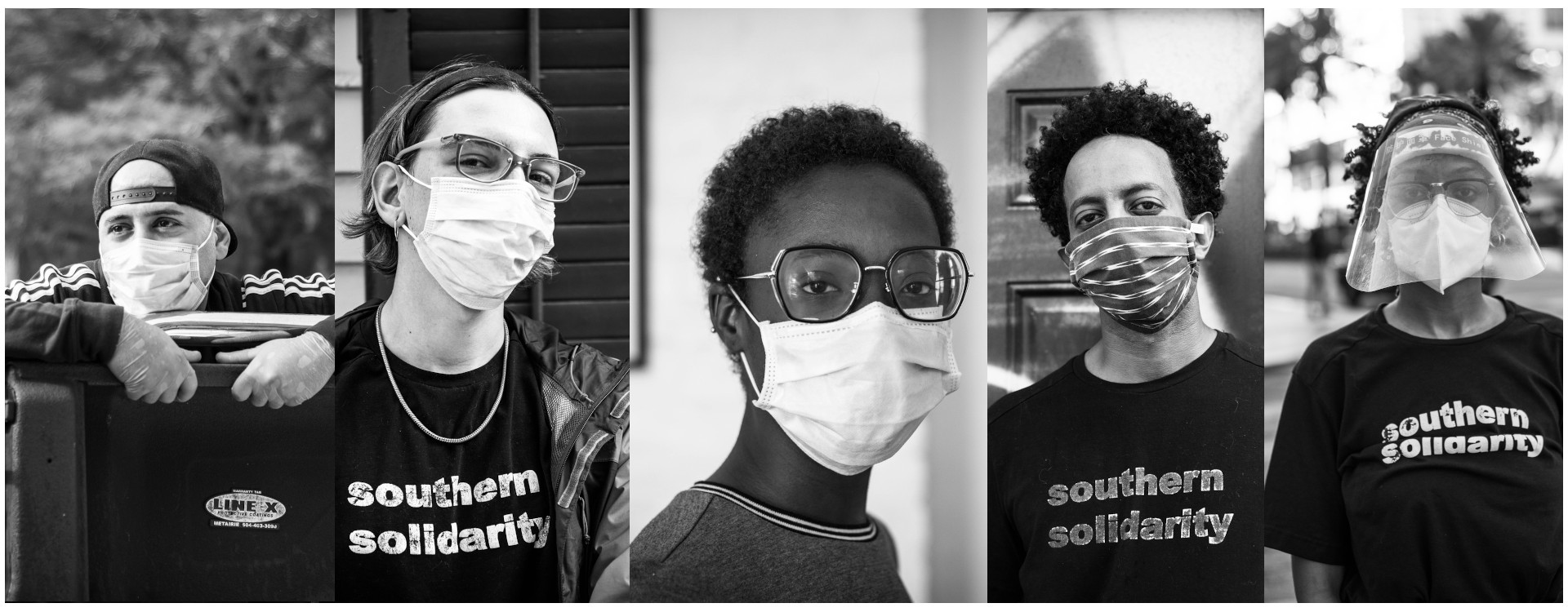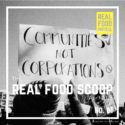by PReP/Neighborhoods, ROAR Magazine
A New Orleans radical mutual aid group organizes with and within communities to help transform the conditions that created the crisis in the first place
The COVID-19 pandemic has strained and even overwhelmed the public health, medical care and disaster response systems where governments and state agencies were ill-prepared to contain and suppress infectious outbreaks. In countries where emergency lockdown measures have been adopted without accompanying policies to guarantee income security and housing tenure, there is the additional problem of economic hardship. Already existing and newly formed non-governmental organizations and associations have mobilized to fill the gap.
These formal and informal groups assist people forced into the margins by government neglect with free meals, grocery and medicine deliveries, safe housing and even cash. They are going beyond traditional voluntary charity disaster relief to provide personal protective equipment (notably face masks), COVID-19 symptoms monitoring, accurate information about locally available COVID-19 and antibody testing facilities, emotional counseling and more. In some cases, these organizations partner with public agencies, including in situations where state institutions are both omnipresent and capable and voluntary associations are essentially licensed subcontractors of the state — as appears to be the case, but only in part, in the People’s Republic of China.
In other contexts — particularly where robust social safety nets are lacking or where austerity has undermined any expectation of government assistance — people have done what they have always done in a crisis: attempted to stem the tide of misery with the resources they have.
Some of these organizations or associations of individuals are describing their efforts to help those in trouble as “mutual aid organizations.” These groups reflect the social or political philosophies of their founders and members, from a devotion to principles of community self-help — in both its conservative and radical variants — to a belief that systematically oppressed groups best overcome their oppression through collective self-management and self-provisioning. They distinguish themselves from charity organizations by their lack of formal association with either the government or the non-profit or religious charity sector and identify as just people helping other people in need.
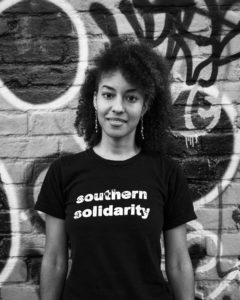
Jasmine Araujo. Photo by Matthew Seltzer.
In New Orleans, for example, a mutual aid group mobilized by Jasmine Araujo called Southern Solidarity has emerged guided by Black feminist liberatory thought and inspired by the direct relief and organizing practices of the Black Panthers. The group of 30 organize the daily delivery of food, medical resources and other basic needs directly to 300 unhoused people in the downtown area of New Orleans because the government failed to meet these needs.
Southern Solidarity is involved in both direct relief and consciousness raising efforts of members and recipients. Members act on the principle that when those who are oppressed receive needs, they are better equipped to move from survival mode to organizing. Key members include trans activists, organizers, formerly incarcerated and the unhoused.
WHAT IS MUTUAL AID?
Mutual aid as a political concept is drawn from the work of anarchist and scientist Peter Kropotkin. In 1902, Kropotkin published Mutual Aid: A Factor in Evolution which argued that it was human cooperation and not competition which has facilitated the survival of our species. Additionally, Kropotkin proposed that the best system of economic and social organization would be one based on mutual exchanges rather than coercion and the profit-motive.
Mutual aid societies or “benevolent societies” have long arisen among disenfranchised groups to fill gaps in insurance, support, education and relief. Examples include the Free African Society formed in late 18th century Philadelphia by formerly enslaved men and contemporary organizations of refugees and immigrants such as the Cambodian Mutual Assistance Association in Lowell, Massachusetts, where members gather and share resources to face shared challenges.
The labor movement was founded on the principle of collective organization for mutual benefit of its members and helped politicize such assistance as acts of solidarity, not charity. The radical edges of the labor movement, as represented by the Industrial Workers of the World, broke through the “in-group” orientation of mutual aid efforts with their slogan “An injury to one is an injury to all.” While the Black Panther Party’s Free Breakfast Program was an acknowledged charity operation in response to the poverty imposed upon Black people in the United States, the Panthers viewed it as facilitating the development of a revolutionary people. In short, people who are in need of basic necessities such as food cannot effectively rebel until they have those needs met.
In light of budget austerity and the shredding of social services, mutual aid has become a term loosely applied to all kinds of charity supplied by voluntary organizations. For those of us interested in liberatory mutual aid, it is crucial to carefully consider what should be the standards for such efforts. An emancipatory mutual aid is not only about connecting those in need to services or even directly providing services, but also about organizing with those in need to assert their human rights and demand what is socially just from systems of exploitation and domination.
In the spirit of the Zapatista principle of mandar obedeciendo (“leadership from below”), efforts must be made to assure that the agency and voice of those receiving aid are equal to, or even ahead of, those providing it, despite the apparent disparity in resources. An impressive example of a large-scale mutual aid endeavor during the COVID-19 crisis comes from a favela of 100,000 people in São Paulo, Brazil. There, 400 “presidents” each took responsibility for the welfare of 50 families apiece, tracking COVID-19 symptoms in family members, and preparing and distributing thousands of hot meals every day.

Photo by Matthew Seltzer.
Radical mutual aid aims to open up space for those forced into dispossession to interrogate why it is that those providing resources are in possession of such resources and those receiving them are not, and also to question why those providing resources are providing them.
That is, one component of mutual aid at its best is education and consciousness raising about power relations — not only the relations between mutual aid donors, distributors and beneficiaries, but also the power dynamics that structure political and economic conditions and social interactions in the places where the mutual aid organizations are active. Consciousness raising might also include education internal to mutual aid teams: for example, training on anti-racism, disability justice, harm reduction and gender studies.
While Southern Solidarity members in New Orleans are immersed in necessary and labor-intensive direct relief efforts that push back against decades of racist austerity measures, group members are encouraged to participate in reading groups and training as well as protests demanding that the government provide adequate resources for all. Southern Solidarity invites the unhoused to reading groups and protests as a way to organize recipients around liberation efforts. An emancipatory mutual aid consciously strives to both prevent the further disempowerment of the recipients and, when possible, push in the other direction, providing platforms on which people can work toward determining their community’s own fate.
Southern Solidarity members act under the premise that solidarity necessitates a deep understanding of the systemic forces of oppression that have created dispossession and crisis. Acts of charity alone do not require a deep understanding of systemic oppression thereby limiting their role as an integral force toward movement building. On the other hand, action-oriented mutual aid interventions motivated by the urge to “do something” but inattentive to contesting these hierarchies and dependencies run the risk of reestablishing exploitative relationships in the very act of trying to help out.
PRACTICING LIBERATION
A mutual aid practice that aims to augment rather than reduce the autonomy and self-determination of those in need must avoid the missionary model, however secular. Rather than parachuting in from the outside to save those in distress, practitioners of a liberatory mutual aid will acknowledge and work with existing community emergency response and disaster resilience networks that are not tied into the power structure that brought about the problem in the first place.To avoid duplicating efforts already undertaken by existing organizations and to make well-informed choices about what is needed where, from the very beginning mutual aid start-ups need to break bread with other organizations in their locality. Southern Solidarity, for instance, has collaborated with a variety of organizations, including People’s Assembly, Overcoming Racism, New Orleans Workers Hospitality Alliance, Trystereo, Beloved, Women with A Vision, Greater New Orleans Caring Collective and Hidden History Tours.
In addition to connecting with local organizations, mutual aid groups with claims to radical liberatory frameworks should refer back to the work of past and current liberation fighters specific to their locale and acknowledge how people shape the current political terrain.
Despite heightened levels of inequity and racism, New Orleans, again our example, has long been a site of cultural resistance to white supremacy — what Ishmael Reed fictionalized as “Jes Grew” in the novel Mumbo Jumbo. From the 1811 slave revolt to the recent Take ’Em Down movement, organizing in New Orleans is characterized by both the delegitimization of the narrative power of the colonial head and an emphasis on the dignity of Black life in all of its manifestations. Southern Solidarity emerged out of this milieu and upholds that history by working with local healers, musicians, advocates, activists,and scholars such as Spirit McIntyre and Angela Kinlaw who continue to pass down affirmation of Black life in a variety of ways.

Photo by Matthew Seltzer.
Scholars with an activist impulse might be best off collaborating with community-based organizations with which they already have long-standing relations rooted in mutual trust. One possible vocation of a “people’s expert” is to comprehensively map community capabilities — research that enables community members themselves to better understand the array of emergency response and disaster resilience resources they already have at their disposal, as well as resources they lack. These capabilities are often grounded in distinctive histories unique to a place.
For example, in the aftermath of 2018’s devastating Camp Fire disaster recovery, activists in Northern California got a crash course education in disaster management policy. Leveraging a core idea in the national emergency response and disaster recovery framework — the primacy of local communities in deciding the substance of disaster recovery plans — the activists coalesced around local tribal governments. The governments contended that their status as sovereign tribes qualified them as public agencies eligible to secure contracts and jobs in disaster recovery. Coalition members gained practical experience as executors of disaster recovery. The learning and skills thus acquired became part of the community’s repertoire of disaster resilience capabilities, ready to be activated when the COVID-19 crisis and state lockdown directives came to Northern California.
Exercises in sizing up a community’s capabilities can help community members and scholars alike realize the distinctiveness of a locality’s history and conditions, and guard against the tendency to propose one-size-fits-all solutions in mutual aid practice. At the same time, a community might be endowed with remarkable survival skills, its story very much worth telling not least because there might be some generalizable lessons about disaster resilience to be drawn from it. Taking an inventory of community capabilities also entails identifying social groups isolated from mainstream communication flows, such as sectarian religious groups — especially important knowledge to have on hand during contagious disease outbreaks.
A bedrock principle of an emancipatory mutual aid is providing space for communities to collectively deliberate and decide upon their own needs and priorities. Assemblies and other democratic fora are settings in which such deliberation and decision-making might occur. Consistent with this, action researchers and people’s experts with an interest in emancipatory mutual aid might conceive their roles to be facilitators and catalyzers of community self-determination.
MUTUAL AID DURING COVID-19
The exceptional circumstances of the COVID-19 pandemic pose peculiar challenges to mutual aid organizations imbued with a self-management ethic. Under ordinary circumstances, it is a rule of thumb that those who “do the work” have a prominent voice in deciding what that work will consist of, from the assessment of needs to the disbursement of funds. But when some organization members are at high risk of contracting severe COVID-19 and cannot do those aspects of “the work” that involve leaving home, there needs to be a recalibration of collective responsibilities and collective governance such that home-bound members continue to have a say in what the organization as a whole does.Mutual aid can thus be characterized as that which is necessary to help fundamentally transform the conditions that created the crisis in the first place. The emergency was here long before the virus arrived.
Mutual aid ranges from basic necessities to emotional support with the expectation that help is a shared community across giving and receiving. All must have an equal voice regardless of position or resources. Democratic organizations that are horizontal and offer opportunities for autonomous organizing by those in relation to each other offer the greatest shot at realizing the dream of the Black Panthers and the Landless Movement and many others across the world that fed, educated and healthy people could dismantle the capitalism and racism that, among other dangers, exposes millions to the worst of outbreaks.
We can bring about new worlds based on assimilating our shared fates.
Pandemic Research for the People (PreP)/Neighborhoods is: John Gulick, Jasmine Araujo, Cora Roelofs, Tanya Kerssen, Meleiza Figueroa, Etant Dupain, Serena Stein, Deborah Wallace, Ryan Petteway, John Choe, Luca de Crescenzo, Audrey Snyder, Colin Kloecker and Rob Wallace.
All photos courtesy of Matthew Seltzer.
